The place value chart example I am going to share with you today is going to be so helpful. It will help your 2nd grade students remember all the forms of a number. I’ll even share my place value chart blank version where students can pick their own 3-digit number and make their own chart. This solidifies students’ understanding of 3-digit numbers.
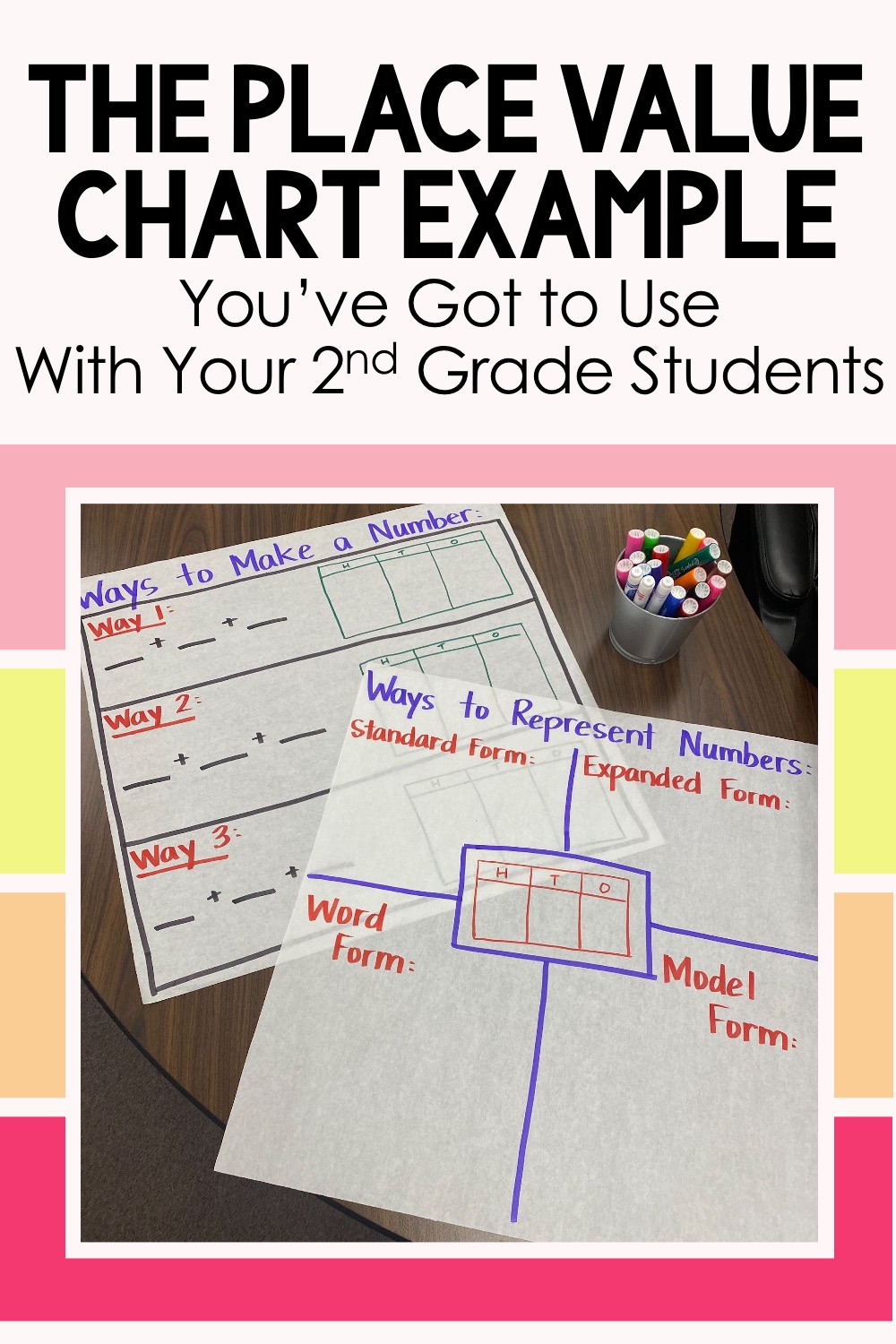
Use this place value chart example to copy and make these place value anchor charts with your 2nd grade students.
Why is this place value chart example important?
You’ll be able to copy it and make this place value anchor chart with your 2nd grade students. Students can refer to it when they need a reminder on each form of a number. It will also help them know their hundreds, tens, and ones better. They will know the true meaning of a 3-digit number. This will in turn help them with 3-digit addition and subtraction strategies in the future.
So let’s get into the place value chart example you can copy and make with your students.
But first… If you’re a parent who has a child struggling with math, you’ve got to check out Learner. Learner is an online tutoring platform that sets students up for success. To get started take a short quiz about your child’s needs. Then Learner’s Success Management Team reviews that and matches your child with the perfect tutor. Get your $25 trial here.
Place Value Chart Example
This place value chart example has 5 sections. The middle shows the chart form of a 3-digit number. In each corner there is the standard form, expanded form, word form, and the last one shows the number with a model.
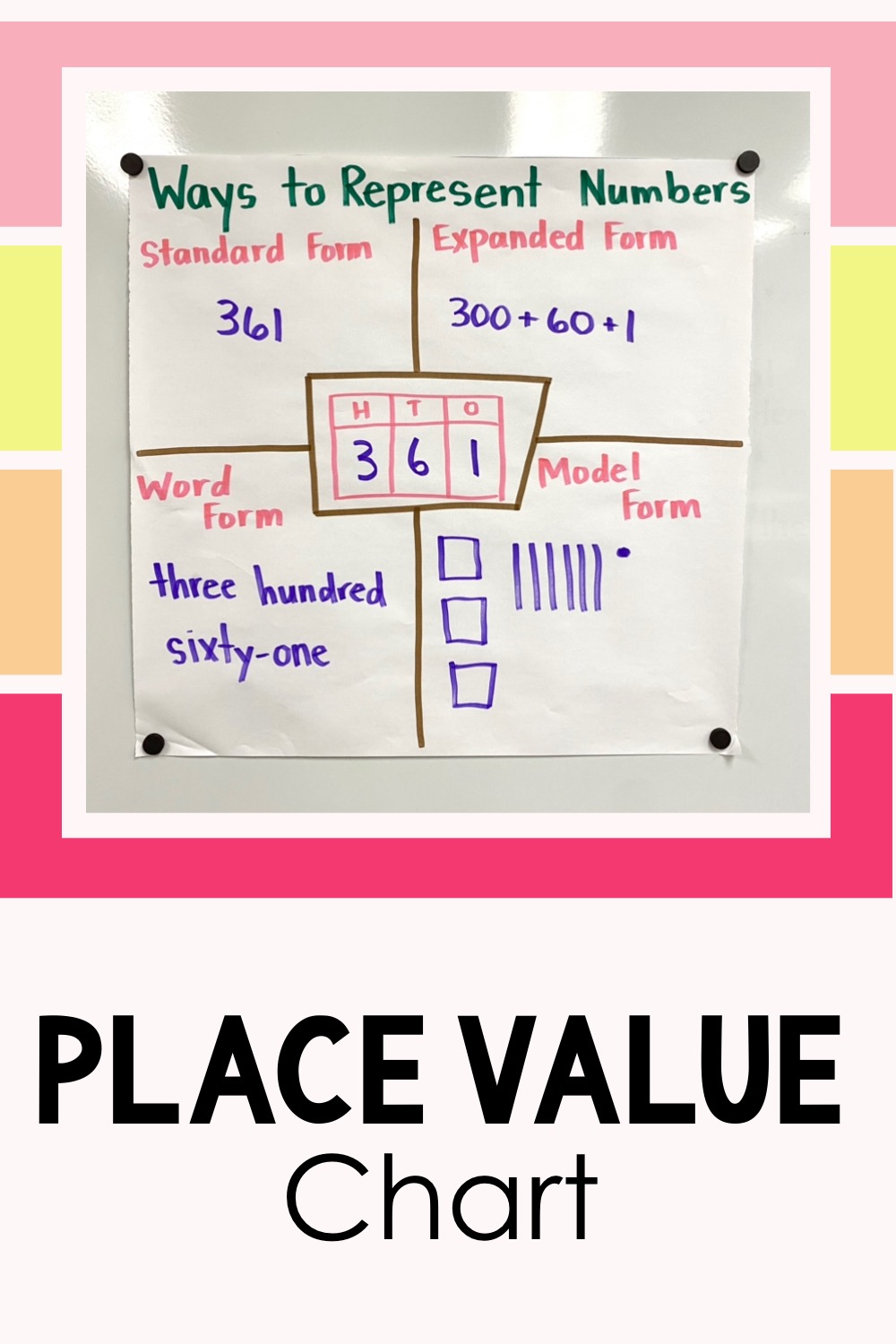
This place value chart helps students learn each form of a 3-digit number.
Let’s take a deeper look into each section.
Chart Form:
In the middle of the chart, I have a hundreds, tens, and ones chart. I label the sections H for hundreds, T for tens, and O for ones. I put numbers in each section to make a 3-digit number. For example, 3 hundreds, 6 tens, and 1 one.
When I make this place value chart with my students, I like to get the outline ready and then do the rest with them. This makes good direct instruction when teaching all the forms of a number. I label each section and we do the rest together. This is what makes the chart more of an anchor chart rather than just a poster. When you make it with your students, they are more likely to refer to it and use it when they need extra support or help. So when in doubt, make your place value chart with your students.
Standard Form:
Students are always a little confused by the word “standard.” I teach students that standard just means normal. So the standard form is just writing the number like we normally do. For our place value chart example, I take our numbers from the chart form and write the number in standard form with my students. They see me do that as I explain what standard form is.
Expanded Form:
I believe this is one of the most important place value skills students can learn. They need to know that a 3-digit number like 361 isn’t 3+6+1, it’s 300+60+1. Where the digit is placed in the number determines its value. That’s why it’s called place value!
To help teach the expanded form, I teach what expand means. I show a regular rubber band and then stretch it out or expand it. Expanded form is just the stretched out version of a number. To expand it or make it longer, we add zeros and plus signs. The 3 in 361 isn’t just 3, it’s 300. The 6 in 361 isn’t just 6, it’s 60. And the 1 in 361 is just 1. Then we write plus signs in between those numbers to make it even longer. 300 + 60 + 1. Learn more tips and practice activities for expanded form in this blog post here.
Word Form:
To teach this form on our place value chart example, I explain to students that we just write out the words when you say the number outloud. I have students say the number and I write out the words they say on our place value chart.
When students are practicing word form, I’ve found that it is helpful when students have a resource that spells out all the numbers for them. Then they can focus on the place value concepts rather than spelling correctly. I give students a spelling dictionary that has a whole page dedicated to just numbers. Students turn open to this page when we are practicing word form. Find the spelling dictionary I use here.
Model:
In this section of the place value chart, I draw out the pictures of the base ten blocks for the number. I ask students how many hundreds the number has. Then I draw that number of hundreds blocks. I continue this with tens and ones.
Showing this model is helpful if you have students struggling with expanded form. It really shows what each digit in a 3-digit number actually means.
Place Value Chart Interactive
Here’s how you can make this place value chart interactive. After making it with your students like I shared above, give each of your students a sticky note. Each student gets to come up with their own 3-digit number. Then they decide what form they want to make that number into. They write it down on their sticky note. Then they place it on the chart in its corresponding section.
Students find it so engaging! They love getting to choose their own number. Plus, they enjoy writing on a sticky note. It’s out of the norm, so it’s fun for them. It also gets them up out of their seats for a bit when they walk up to the chart and stick on their note. It gives their brain a little break so that they are ready to continue practicing using a place value chart.
Place Value Chart Blank
I want to give my students more practice with each form of a number, so I have them make their own place value chart with a place value chart blank worksheet.
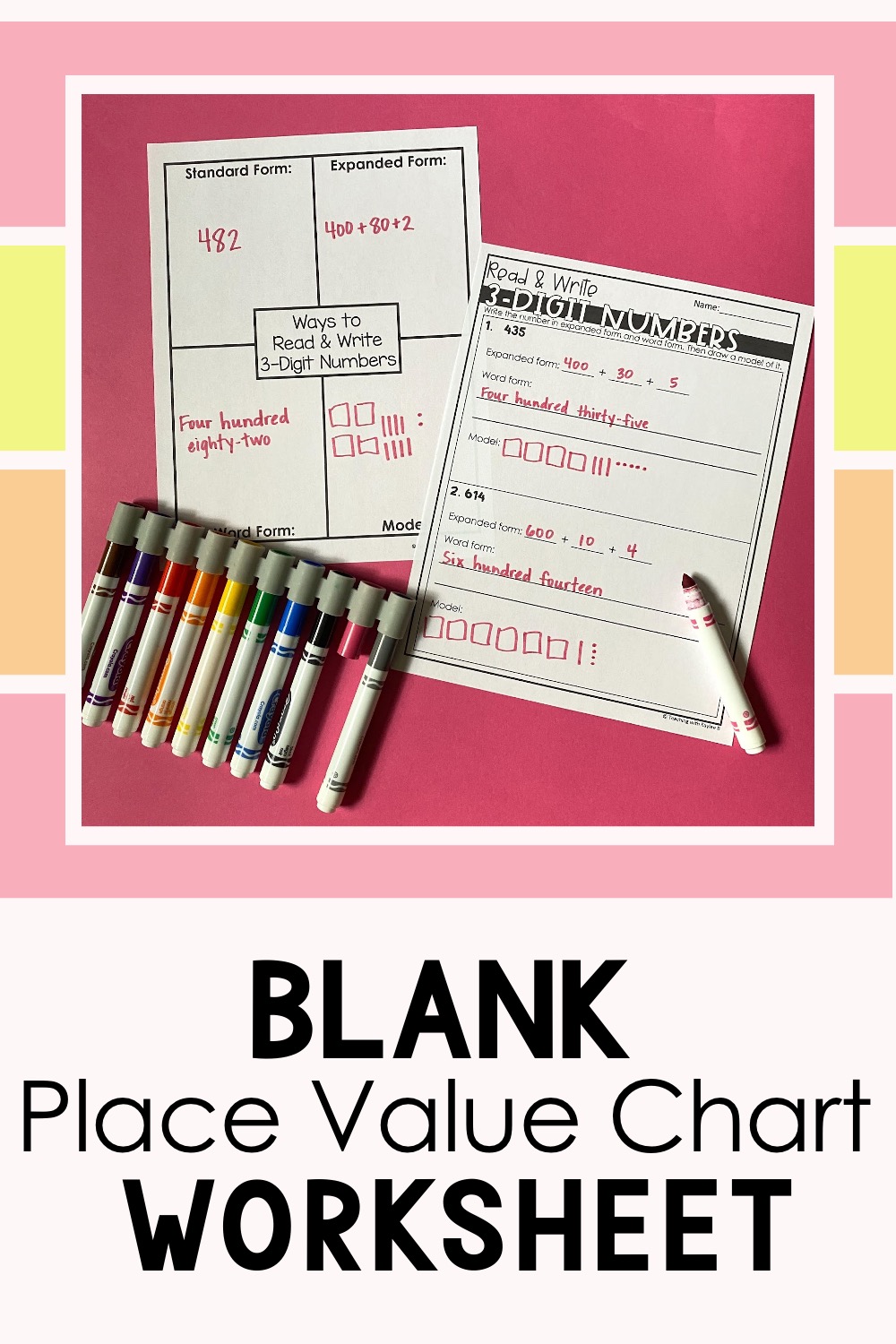
Have your students fill in their own place value chart with this place value chart blank worksheet.
This is a worksheet that I print out, but it has the same outline as the place value anchor chart we made together as a class. With this place value chart worksheet, students pick any 3-digit number and fill out its different forms.
They love choosing their own number. To make it even more engaging, I let them use a marker to fill it out. This makes it feel more like a chart or a poster. You can even display these up in your classroom or in the hallway.
Find this place value chart worksheet here.
Find the maker holders I use here.
Place Value Chart: Hundreds, Tens, and Ones
I make another anchor chart with my students during our place value unit. This chart highlights the hundreds, tens, and ones in a 3-digit number and how students can exchange those to still make the same number.
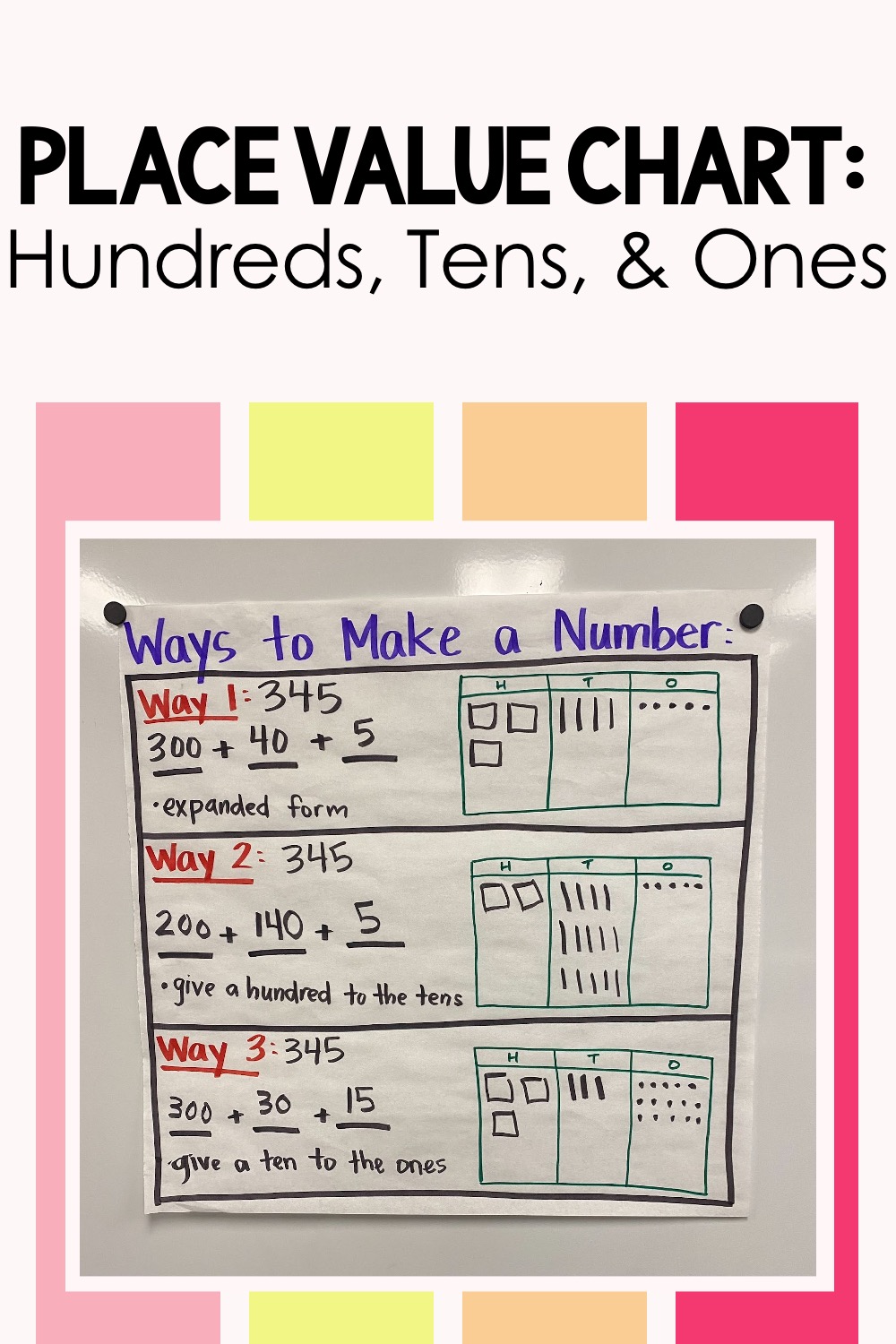
Build more number sense with this place value chart that focuses on hundreds, tens, and ones.
This chart and place value lesson is so important because it helps students learn to be flexible with these numbers. Being flexible with numbers will help them later on when you teach your students different 3-digit addition & subtraction strategies.
So what’s included on this place value chart? Hundreds, tens, and ones. The first section shows a 3-digit number written in expanded form. I also show the models drawn out in a hundreds, tens, and ones chart.
The next section shows an equation for the number that is similar to the expanded form, but this time you give a hundred to the tens. I also draw out the models for this in a hundreds, tens, and ones chart.
The third section is also like the expanded form, but this time you give a ten to the ones. I again show the models drawn out in a hundreds, tens, and ones chart.
I want to give students lots of practice with this concept so I have them practice with a couple different place value chart worksheets.
The first worksheet gives students a 3-digit number and they have to write the 3 different equations to make the number. This is where this place value chart comes in handy. They can look at it and think “Okay, the first way is expanded form.” or “The second way has us give a hundred to a tens.” The chart gives students the support they need as they are first learning this place value concept.
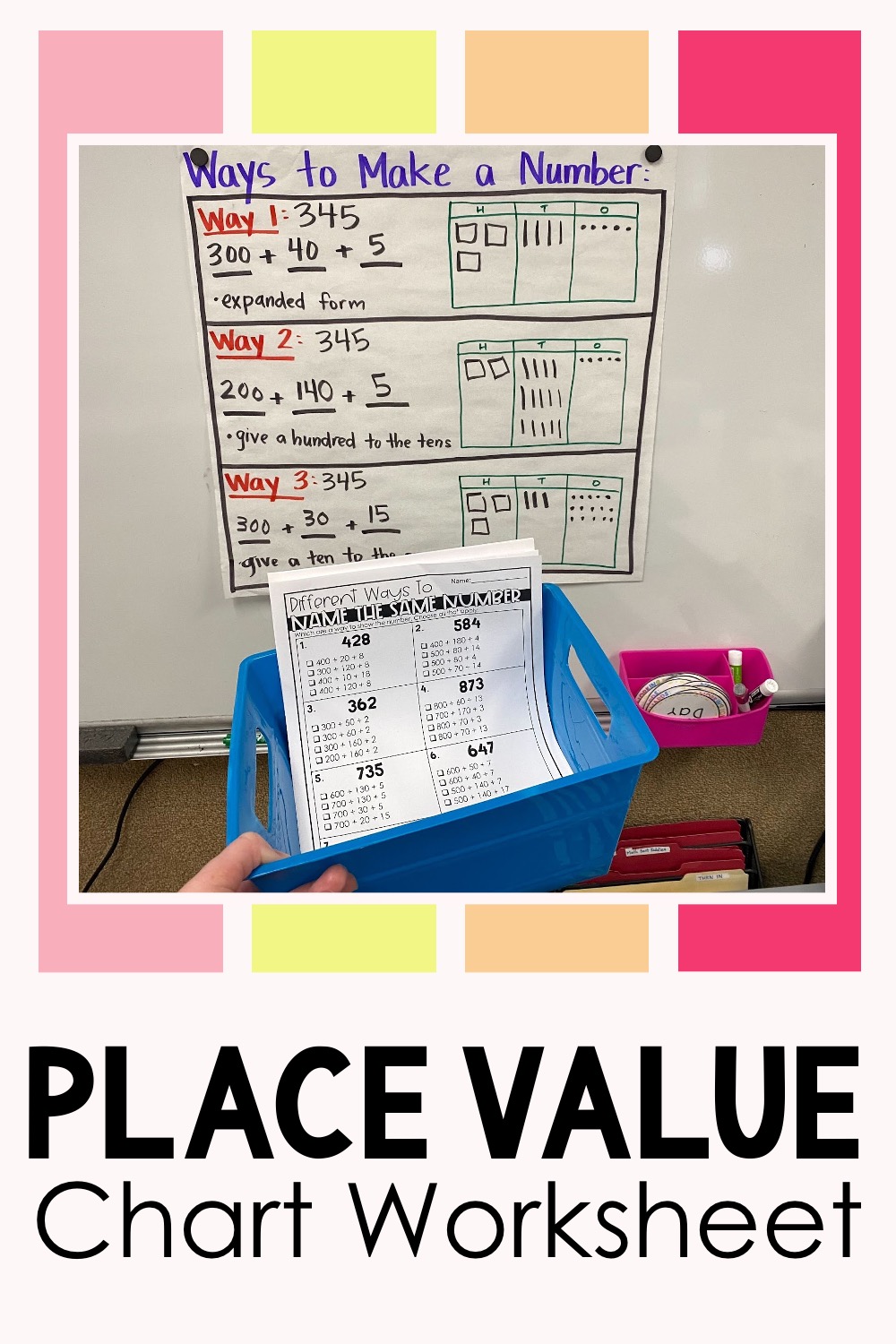
Display this place value chart up to support students as they get practice with this place value chart worksheet.
The second worksheet gives students the options to different equations, and they need to choose the ones that correctly make the number. To help students complete this worksheet, I first have them find the expanded form equation. Then I have them look for the other 2 ways. Again, having this place value anchor chart displayed up for students to see is very helpful.
Find these place value chart worksheets here.
Let me show you why this place value chart example and concept is so important. When I teach my students 3-digit addition strategies, I teach them a mental math strategy. I’ve also heard it be called the expanded form strategy.
Students add the hundreds together, the tens together, and the ones together. Then they put plus signs in between to make an equation. We want it to be expanded form, but oftentimes it is not. You might have to move a hundred or a ten around to get it to the true expanded form. Once students get it to the true expanded form, it’s very easy for them to add the numbers together to get the standard form of the number. Learn more about this strategy in this blog post here.
I hope these place value chart examples have been helpful and that you can picture yourself making them with your students. They will help you with direct instruction on these important place value concepts.
Want to learn how to best teach each 2nd grade place value concept? Check out this blog post here.
Not into writing and making your own anchor charts? I have a place value chart printable pdf you can use here. You can print off individual charts for students or just display them up on your board using your projector.
Find all of my place value instruction materials and practice activities in a money-saving bundle here.


